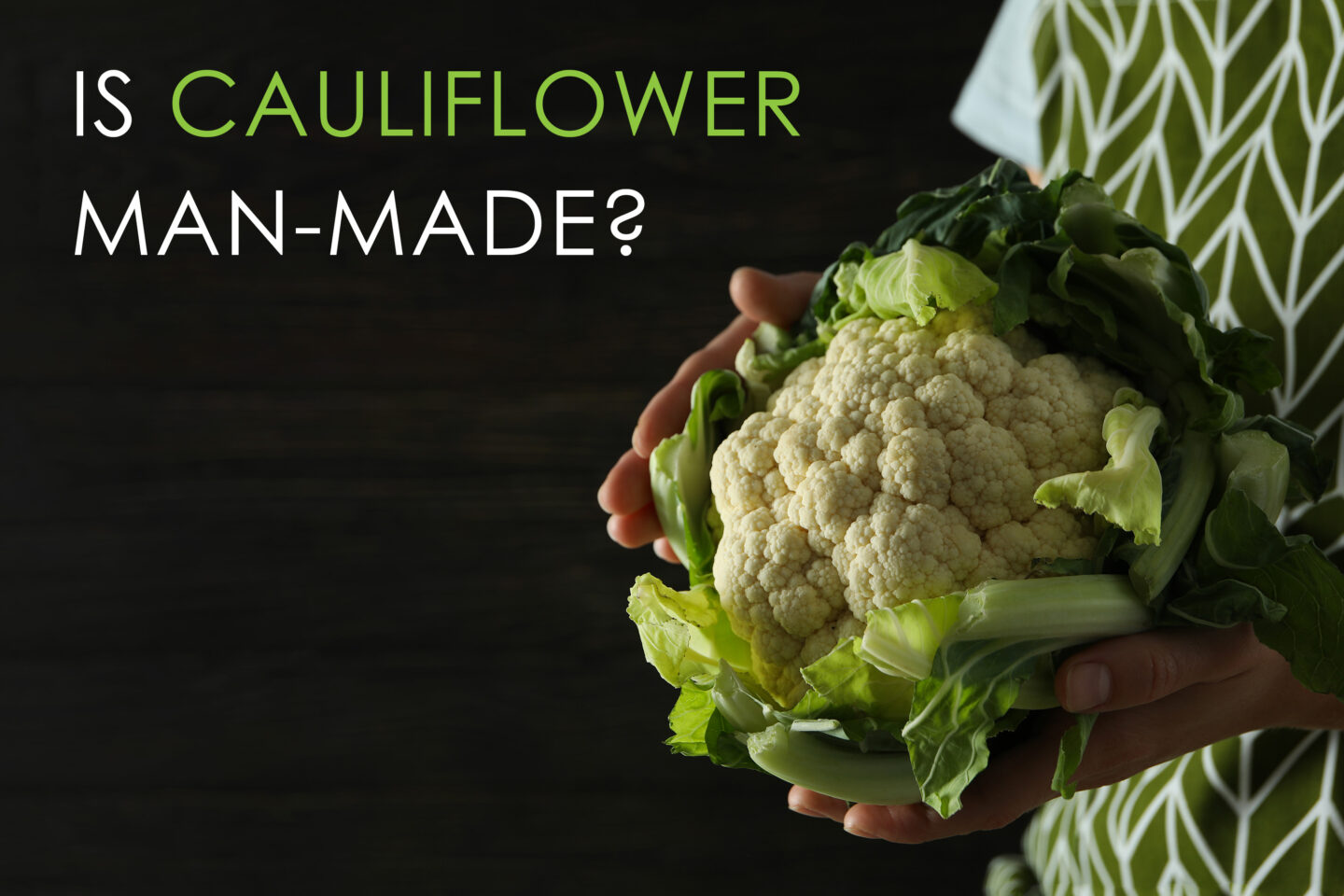Some fruits and vegetables look so strange that they don't seem natural. As many are healthy and delicious, it makes you wonder if they were bred for our tables.

With its outstanding colors and shape, cauliflower seems almost other-worldly, but was it bred by humans?
Table of Contents
Is Cauliflower Man-Made?
Yes, it is! Cauliflower belongs to the Brassica oleracea family of vegetables, which also includes kohlrabi, broccoli, and Brussels sprouts. These all originated from wild mustard on Cyprus; the Ancient Romans selected wild mustard plants with particularly large flowers and bred them, resulting in cauliflower and broccoli.
Cauliflower was first described in Natural History by Pliny the Elder, a Roman naturalist and philosopher.
In the 12th and 13th centuries, it gradually became popular in Western Europe, becoming a staple food in the 16th century.
READ NEXT: Is Cauliflower Acidic?
Nutrients in Cauliflower

Is Cauliflower Good for You?
The cauliflower is a very nutritious vegetable. In particular, it's high in choline, which has several important functions. Cauliflower contains 45 mg per cup and, along with broccoli, is one of the best vegetable sources.
Cauliflower is also low in calories, and like other brassicas, it's high in antioxidants and supports your immune system.
READ ALSO: Is Cauliflower Really a Flower?
What Is Better for You, Cauliflower or Broccoli?
Nutritionally, broccoli and cauliflower are very similar, but there are a couple of differences.
Broccoli contains more fiber, minerals, and vitamins, especially C and K.
However, cauliflower is very versatile and is popular with those on a low-carb diet, as it's used in place of rice and for making pizza crust.
Both cauliflower and broccoli have similar textures and a mild taste, so they are interchangeable in the kitchen.
Cauliflower Varieties

There are hundreds of varieties of cauliflower, but all of them fall into one of four categories: Italian cauliflower, Northern European annuals, Northwest European biennials, and Asian cauliflower.
Italian cauliflower was the first to be bred, and other varieties were developed from it in France, Germany, England, and the Netherlands.
Northern European annuals were developed in Germany and are harvested in the summer or fall.
The Northwest European biennial was developed in 19th century France and is harvested in spring or winter.
Indian cauliflower was bred to withstand hot, humid conditions with a lot of rainfall.
Orange cauliflower is a genetic mutation that originated in Canada in the 1970s. Its color comes from beta carotene, which also gives carrots their distinctive color. It contains about 25% more vitamin A than white cauliflower.
Purple cauliflower gets its color from the antioxidant anthocyanin, which is also present in red cabbage and red wine. Green cauliflower was developed in the early 1990s and is sometimes called broccoflower, as it's a cross between broccoli and cauliflower.
Colored and white cauliflower can be substituted for each other in recipes, but some dishes look better with vibrant colors.
Does Cauliflower Contain Carbs?
Cauliflower is low in carbs, containing only 5 grams per cup, much lower than a cup of rice with 45 grams.
It's also non-starchy and is often recommended for those on diabetic or low-carb diets.
Don't know what to drink? Check out these articles: 20 Most and Least Acidic Juices and 20+ Alcoholic Drinks Ranked by Acidity Level
